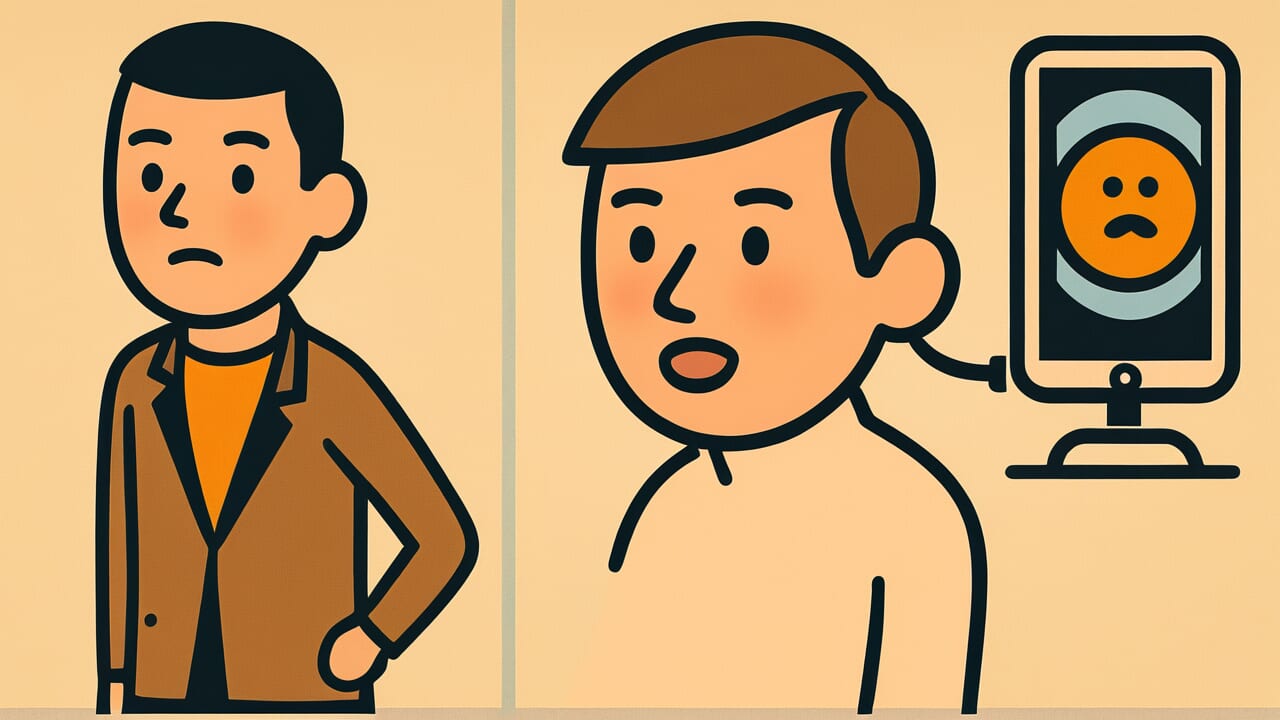How to Read “Better one-eyed than stone-blind”
Better one-eyed than stone-blind
[BET-ter WUN-ahyd than STOHN-blahynd]
Meaning of “Better one-eyed than stone-blind”
Simply put, this proverb means having some ability or knowledge is much better than having none at all.
The saying compares two types of vision problems. Someone who is one-eyed can still see the world around them. They might miss some details or depth. But they can still navigate life safely. A stone-blind person cannot see anything at all. They face much greater challenges in moving through the world.
This wisdom applies to many situations beyond eyesight. Maybe you know a little about computers but not everything. That small knowledge is still valuable. It helps you solve basic problems and learn more. Someone with no computer skills at all faces bigger obstacles. The same idea works for languages, job skills, or understanding people.
People often realize this proverb challenges perfectionist thinking. We sometimes avoid trying things because we cannot do them perfectly. This saying reminds us that partial ability has real worth. Even limited knowledge or skill can make a meaningful difference in our lives.
Origin
The exact origin of this proverb is unknown, though similar expressions appear in various forms across European languages. Early versions focused on the practical reality that partial sight provides significant advantages over complete blindness. The phrase “stone-blind” itself dates back several centuries in English.
During earlier periods of history, vision problems were much more common and serious. People had no glasses, eye surgery, or medical treatments we have today. Losing sight in one eye was unfortunate but manageable. Complete blindness created severe hardships. This stark difference made the comparison especially meaningful to people of that time.
The saying spread through oral tradition and written collections of folk wisdom. Over time, people began using it beyond literal vision problems. They applied it to skills, knowledge, and abilities in general. The core message remained the same while the applications grew broader. Today we use it mainly in figurative ways rather than discussing actual eyesight.
Fun Facts
The term “stone-blind” uses “stone” as an intensifier, similar to “stone-cold” or “stone-dead.” This construction emphasizes complete and absolute blindness, not partial vision loss. The word choice creates a strong contrast with “one-eyed,” making the comparison more dramatic and memorable.
Usage Examples
- Manager to employee: “I know the backup system only covers half our data, but it’s something – better one-eyed than stone-blind.”
- Parent to teenager: “Sure, your part-time job doesn’t pay much, but you’re gaining experience – better one-eyed than stone-blind.”
Universal Wisdom
This proverb reveals a fundamental truth about how humans evaluate worth and capability. We naturally tend toward all-or-nothing thinking, but survival often depends on recognizing the value of partial solutions. Our ancestors understood that dismissing incomplete abilities could mean the difference between thriving and struggling.
The wisdom addresses a deep psychological pattern where people undervalue their limited skills. This happens because we compare ourselves to ideal standards rather than to having nothing at all. Someone with basic cooking skills might feel inadequate next to a chef. But those basic skills provide nutrition, save money, and offer independence. The proverb reminds us that partial competence creates real advantages over complete inability.
This saying also reflects how communities function and survive. Groups benefit when members contribute whatever abilities they possess, even if those abilities are limited. A person with some medical knowledge helps during emergencies, even without formal training. Someone with partial language skills can still facilitate communication between groups. The proverb recognizes that collective strength often comes from combining many partial contributions rather than waiting for perfect expertise.
When AI Hears
Humans create invisible ladders even when stuck in difficult situations. The one-eyed person becomes a bridge between two worlds. They can guide blind people while understanding sighted people’s experiences. This creates a special social role that serves everyone. Communities naturally build these middle positions to help people cope. It prevents the despair of feeling completely cut off from normal life.
This pattern reveals how humans refuse to accept total separation between groups. We instinctively create stepping stones between different levels of ability or hardship. The one-eyed person offers hope to those worse off. They also provide comfort to those better off by showing gradual differences. This system helps entire communities function better during tough times.
What strikes me most is how this creates unexpected strength from limitation. Humans transform partial loss into social advantage through these middle roles. The one-eyed person gains unique wisdom that fully sighted people lack. They become valuable precisely because they bridge two experiences. This shows how humans turn disadvantage into a different kind of power.
What … Teaches Us Today
Living with this wisdom means recognizing and valuing incremental progress over perfectionist paralysis. When facing new challenges, the focus shifts from achieving mastery to gaining any foothold at all. Someone learning a musical instrument benefits more from playing simple songs imperfectly than from avoiding practice until they can perform flawlessly. The partial skill builds confidence and creates a foundation for improvement.
In relationships and collaboration, this understanding helps people contribute without feeling inadequate. Team members can offer their limited expertise knowing it adds value to the group effort. A person with basic design skills can help with a project even if they are not professional designers. Their contribution moves the work forward and allows others to build upon it. This approach creates more inclusive and productive environments.
The wisdom becomes especially important during difficult transitions or setbacks. Someone who loses their primary skill or faces new limitations can focus on what remains rather than what is gone. A professional athlete with an injury might become a coach, using their partial physical ability and complete knowledge of the game. The proverb encourages adaptation and resilience rather than despair over lost perfection. This perspective transforms limitations into starting points rather than ending points.



Comments